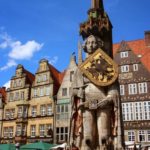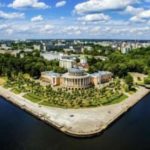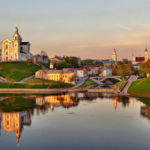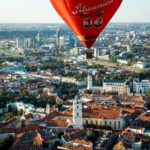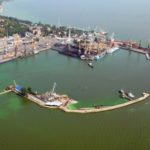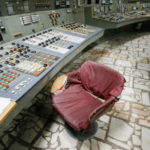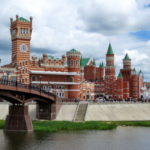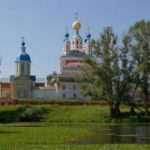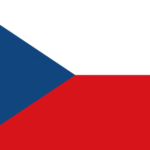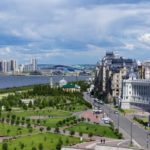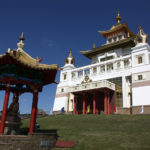Interesting facts about Brest
 Brest is not only one of the most visited cities of the Republic of Belarus, but also one of the most beautiful. Like the capital of the country, Minsk, it was seriously damaged during the fighting during the Second World War, but later the city was restored and put in order.
Brest is not only one of the most visited cities of the Republic of Belarus, but also one of the most beautiful. Like the capital of the country, Minsk, it was seriously damaged during the fighting during the Second World War, but later the city was restored and put in order.
According to the legend, Brest was founded by accident – a merchant on the way to Lithuania got bogged down in a swamp and miraculously got to some island in the quagmire, spreading his way through the trunks of marsh trees. On the way back the merchant again found himself in this place and laid the city, named Bereesti in honor of the many birches growing there.
In Brest, the plan for the decisive battle of the “Great War”, which occurred in the early 15th century, was worked out. Then the combined forces of Lithuanians, Russians, Tatars, Poles, Moldovans and other nations opposed the knights from the countries of Western Europe.
At the end of the 19th century, the railway station of Brest was considered the best in the empire.
Constructed in Brest suspension bridge for a long time was the longest in the empire – it was thrown across the river at the erection of the Brest Fortress.
Brest became one of the first Russian cities on whose streets lanterns with electric bulbs appeared.
Brest became the first city in the schools where the subject “Sexology” appeared. This innovation was introduced into the educational process in 1920.
Brest is not only a city, but also a small planet discovered by a Soviet woman astronomer in 1974.
Brest almost from the time of its foundation was a customs city, charged with the duty for goods transported deep into the empire. In the 12th century a wooden fortress was built there to protect caravans from robbers.
At the beginning of the 16th century, Brest’s revenues in the form of customs duties exceeded the income of the treasury of Minsk, the current capital of Belarus, tenfold.
In 1525, a major fire occurred in Brest – not only the castle burned down, but all the administrative buildings in the center of the city burned. After that, the law forbade the construction of wooden houses in Brest.
Nicholas the First ordered to completely destroy the old city and erect a Brest Fortress in its place. The new city was built several kilometers east of the fortification. For the convenience of the military in the city it was forbidden to build houses above 2 floors.
In Brest there is the oldest primer created from Belarus. This is a box comb for hair, on which 13 letters are scratched.
Tourists are attracted to Brest, not only the fortress, but also the railway museum – dozens of locomotives, electric locomotives and wagons that have been cruising the country since the 1940s are on the open air routes. Almost all of them are still in good order and are actively used for filming of historical films.
In Brest, they decided to use the love of bats to the old fortifications and set up the “Barbastella” sanctuary, in which they observe the behavior of these creatures flocking to the fortress from all over Europe.
The first mint in Belarus was opened in Brest.
In the spring of 1915 the Brest Fortress was one of the most fortified and reliable structures in Europe, but at the last moment it was decided not to defend it and took all the valuable things out of the stronghold. Then the retreating soldiers left it and partially blew it up.
After the outbreak of the Second World War, the Germans planned to break the resistance of the Brest Fortress by noon on the first day of the offensive. In reality, the last defender of the fortifications was captured only a month later.



